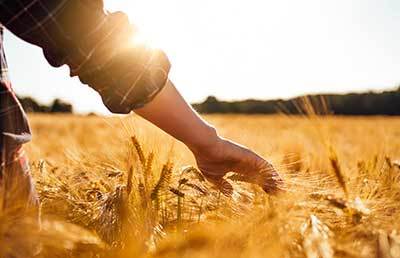A Farm CPA’s Labor Day Weekend

For most people Labor Day Weekend means time off. For the typical farm CPA like me, Labor Day Weekend means you can try to get most of those pesky September 15 business returns complete (and no I am not complete yet but getting close).
This Labor Day Weekend was typical for me, however, I was able to get some combine time in on my spring and winter wheat fields that were being harvested.
On Sunday, I rode the combine for about three hours about 1 mile west of Dixie, Washington on a fairly mild hilly field. There was a couple areas where the horn was going off when we were exceeding the normal slope going downhill. My assumption is the slope has to exceed 30 percent and I know on these hills a couple of the slopes were probably closer to 40% but it was only for a few hundred feet and it was not a big deal.
On Monday, I was able to get some combining on the hills I grew up with and tried to harvest using an International 453. These older combines could self-level up to about 45 percent and could self level going up a hill. The newer combines can self-level to about 28 percent but only on a side-hill, plus the sieves have an extra 8 percent or so leveling built-in. This means if you are on a slope of around 35 percent or less, most of the grain is still getting into the grain bin instead of going out the back of the combine.
Although the 453 could self-level more, they were a much smaller machine and had no weight in the rear-end. My father actually flipped over one of these combines. It did not kill him but it was not a pleasant experience for him.
The newer combines have rear-wheel assist for going up steep hills and on Monday the driver used this multiple times. We were easily on slopes exceeding 40 percent. Going uphill always seem safer than going downhill since downhill means you have to brace yourself not to “fall” into the window. I have been on many blue-diamond ski runs that are not this steep.
Here is a photo showing the combine on one of the slopes that was moderately steep but not the steepest. When you take a photo straight-on, you can’t tell how steep it is. This photo gives you a better idea but it still does not look as steep as being there.

Dumping on the go on sidehills can be very interesting. When the ground is not level, the combine operator will put the hydraulics in manual mode so that the auger will clear the grain cart. The last thing you want to have happen is the combine to self-level and drive the auger into the top of the grain cart and break it.
On the photo you will note the large amount of dust surrounding the combine. That is not normal for harvesting wheat. This field had most of the wheat do down and it was all on the ground. The operator had to put the header right on the ground and this creates all of the dust and makes for slow going. I don’t think the combine exceeded 2 miles an hour for the four hours I rode.
We also had to cut grain over a couple of “eyebrows”. This is likely the steepest part of the field and where you are likely to slide the combine. The eyebrow is where the field goes from fairly flat (less than 10 percent) to steeper (over 30 percent) and as you cut the transition between flat and steep you go over the eyebrow which can be really steep but only for about one or two cuts. This is when you likely need to be the most careful. On this cut the eyebrow was not too bad and we only slid the combine a couple of times and the slide was probably less than 2 feet but 2 feet still wakes you up a bit.
I know there was no tax information today but combine time is still important too. There is something therapeutic about riding a combine and I might even volunteer to operate one for my cousins next year.
Paul Neiffer is a certified public accountant and business advisor specializing in income taxation, accounting services, and succession planning for farmers and agribusiness processors. Paul is a principal with CliftonLarsonAllen in Walla Walla, Washington, as well as a regular speaker at national conferences and contributor at agweb.com. Raised on a farm in central Washington, he has been immersed in the ag industry his entire life, including the last 30 years professionally. Paul and his wife purchase an 180 acre ranch in 2016 and enjoy keeping it full of animals.

A couple more weeks and I will be cutting our soybeans. We have a farm that has some steep climbs too but not as bad as what your picture shows. When my dad bought that farm, we stacked the bales on a flat rack and the hay was constantly tipping off the wagon. He soon bought a baler with a tosser and some tosser bale wagons to cure the problem. We still had to be careful when pulling them through washouts as to not rock the wagon so hard that it would tip over.